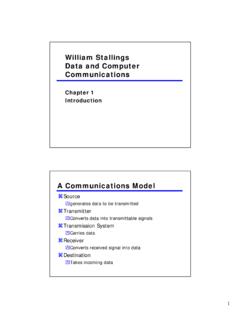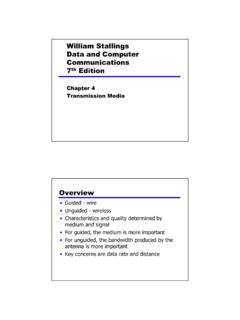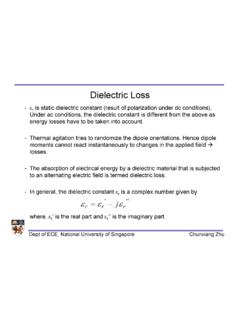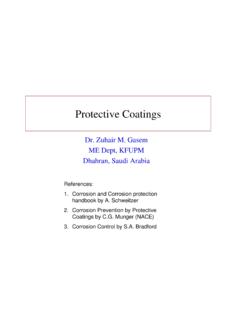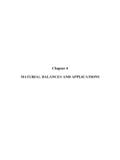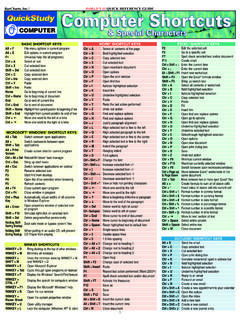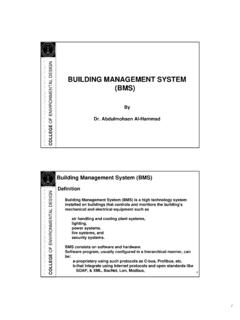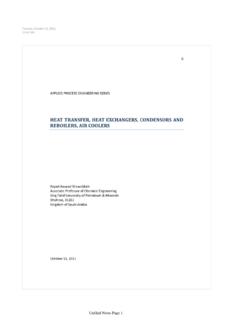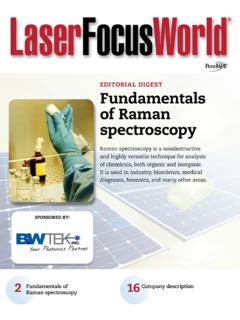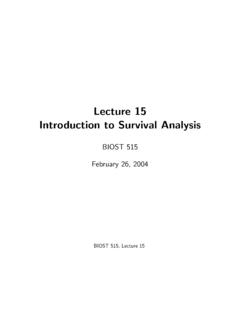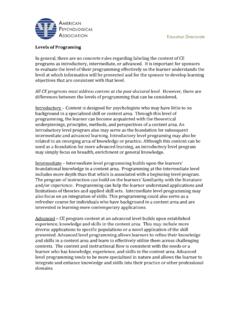Transcription of INTRODUCTORY NUCLEAR PHYSICS - KFUPM
1 INTRODUCTORY . NUCLEAR . PHYSICS . Kenneth S. Krane Oregon State University JOHN WlLEY & SONS. New York Chichester Brisbane Toronto Singapore Copyright 0 1988, by John Wiley & Sons, Inc. All rights reserved. Published simultaneously in Canada. Reproduction or translation of any part of this work beyond that permitted by Sections 107 and 108 of the 1976 United States Copyright Act without the permission of the copyright owner is unlawful. Requests for permission or further information should be addressed to the Permissions Department, John Wiley & Sons. Library of Congress Cataloging in Publication Data: Krane, Kenneth S. INTRODUCTORY NUCLEAR PHYSICS . Rev. ed. of INTRODUCTORY NUCLEAR PHYSICS /David Halliday. 2nd. ed. 1955. 1. NUCLEAR PHYSICS . I. Halliday, David, 1916 - INTRODUCTORY NUCLEAR PHYSICS . 11. Title. 1987 87-10623.
2 ISBN 0-471-80553-X. Printed in the United States of America 10 9 8 7 6 5 4 3 2. PREFACE. This work began as a collaborative attempt with David Halliday to revise and update the second edition of his classic text INTRODUCTORY NUCLEAR PHYSICS (New York: Wiley, 1955). As the project evolved, it became clear that, owing to other commitments, Professor Halliday would be able to devote only limited time to the project and he therefore volunteered to remove himself from active participa- tion, a proposal to which I reluctantly and regretfully agreed. He was kind enough to sign over to me the rights to use the material from the previous edition. I first encountered Halliday's text as an undergraduate PHYSICS major, and it was perhaps my first real introduction to NUCLEAR PHYSICS . I recall being impressed by its clarity and its readability, and in preparing this new version, I have tried to preserve these elements, which are among the strengths of the previous work.
3 Audience This text is written primarily for an undergraduate audience, but could be used in INTRODUCTORY graduate surveys of NUCLEAR PHYSICS as well. It can be used specifically for PHYSICS majors as part of a survey of modern PHYSICS , but could (with an appropriate selection of material) serve as an INTRODUCTORY course for other areas of NUCLEAR science and technology, including NUCLEAR chemistry, NUCLEAR engineering, radiation biology, and NUCLEAR medicine. Background It is expected that students have a previous background in quan- tum PHYSICS , either at the INTRODUCTORY level [such as the author's text Modern PHYSICS (New York: Wiley, 1983)] or at a more advanced, but still undergraduate level. (A brief summary of the needed quantum background is given in Chapter 2.) The text is therefore designed in a two-track mode, so that the material that requires the advanced work in quantum mechanics, for instance, transition probabilities or matrix elements, can be separated from the rest of the text by skipping those sections that require such a background.
4 This can be done without interrupting the logical flow of the discussion. Mathematical background at the level of differential equations should be sufficient for most applications. Emphasis There are two features that distinguish the present book. The first is the emphasis on breadth. The presentation of a broad selection of material permits the instructor to tailor a curriculum to meet the needs of any particular V. vi PREFACE. student audience. The complete text is somewhat short for a full-year course , but too long for a course of quarter or semester length. The instructor is therefore able to select material that will provide students with the broadest possible introduction to the field of NUCLEAR PHYSICS , consistent with the time available for the course . The second feature is the unabashedly experimental and phenomenological emphasis and orientation of the presentation.
5 The discussions of decay and reaction phenomena are accompanied with examples of experimental studies from the literature. These examples have been carefully selected following searches for papers that present data in the clearest possible manner and that relate most directly to the matter under discussion. These original experiments are discussed, often with accompanying diagrams of apparatus, and results with uncertainties are given, all in the attempt to convince students that progress in NUCLEAR PHYSICS sprang not exclusively from the forehead of Fermi, but instead has been painstakingly won in the laboratory. At the same time, the rationale and motivation for the experiments are discussed, and their contributions to the theory are emphasized. Organization The book is divided into four units: Basic NUCLEAR Structure, NUCLEAR Decay and Radioactivity, NUCLEAR Reactions, and Extensions and Appli- cations.
6 The first unit presents background material on NUCLEAR sizes and shapes, discusses the two-nucleon problem, and presents an introduction to NUCLEAR models. These latter two topics can be skipped without loss of continuity in an abbreviated course . The second unit on decay and radioactivity presents the traditional topics, with new material included to bring NUCLEAR decay nearly into the current era (the recently discovered heavy decay modes, such as 14C, double P decay, P-delayed nucleon emission, Mossbauer effect, and so on). The third unit surveys NUCLEAR reactions, including fission and fusion and their applications. The final unit deals with topics that fall only loosely under the NUCLEAR PHYSICS classification, including hyperfine interactions, particle PHYSICS , NUCLEAR astrophysics, and general applications including NUCLEAR medicine.
7 The emphasis here is on the overlap with other PHYSICS and nonphysics specialties, including atomic PHYSICS , high-energy PHYSICS , cosmology, chemistry, and medi- cine. Much of this material, particularly in Chapters 18 and 19, represents accomplishments of the last couple of years and therefore, as in all such volatile areas, may be outdated before the book is published. Even if this should occur, however, the instructor is presented with a golden opportunity to make important points about progress in science. Chapter 20 features applications involving similarly recent developments, such as PET scans. The material in this last unit builds to a considerable degree on the previous material; it would be very unwise, for example, to attempt the material on meson PHYSICS or particle PHYSICS without a firm grounding in NUCLEAR reactions.
8 Sequence Chapters or sections that can be omitted without loss of continuity in an abbreviated reading are indicated with asterisks (*) in the table of contents. An INTRODUCTORY short course in NUCLEAR PHYSICS could be based on Chapters 1, 2, 3, 6, 8, 9, 10, and 11, which cover the fundamental aspects of NUCLEAR decay and reactions, but little of NUCLEAR structure. Fission and fusion can be added from PREFACE vii Chapters 13 and 14. Detectors and accelerators can be included with material selected from Chapters 7 and 15. The last unit (Chapters 16 to 20) deals with applications and does not necessarily follow Chapter 15 in sequence. In fact, most of this material could be incorporated at any time after Chapter 11 ( NUCLEAR Reactions). Chapter 16, covering spins and moments, could even be moved into the first unit after Chapter 3.
9 Chapter 19 ( NUCLEAR Astrophysics) requires background material on fission and fusion from Chapters 13 and 14. Most of the text can be understood with only a minimal background in quantum mechanics. Chapters or sections that require a greater background (but still at the undergraduate level) are indicated in the table of contents with a dagger ("f- Many undergraduates, in my experience, struggle with even the most basic aspects of the quantum theory of angular momentum, and more abstract con- cepts, such as isospin, can present them with serious difficulties. For this reason, the introduction of isospin is delayed until it is absolutely necessary in Chapter 11 ( NUCLEAR Reactions) where references to its application to beta and gamma decays are given to show its importance to those cases as well. No attempt is made to use isospin coupling theory to calculate amplitudes or cross sections.)
10 In an abbreviated coverage, it is therefore possible to omit completely any discus- sion of isospin, but it absolutely must be included before attempting Chapters 17. and 18 on meson and particle PHYSICS . Notation Standard notation has been adopted, which unfortunately overworks the symbol T to represent kinetic energy, temperature, and isospin. The particle physicist's choice of I for isospin and J for NUCLEAR spin leaves no obvious alternative for the total electronic angular momentum. Therefore, I has been reserved for the total NUCLEAR angular momentum, J for the total electronic angular momentum, and T for the isospin. To be consistent, the same scheme is extended into the particle PHYSICS regime in Chapters 17 and 18, even though it may be contrary to the generally accepted notation in particle PHYSICS .
